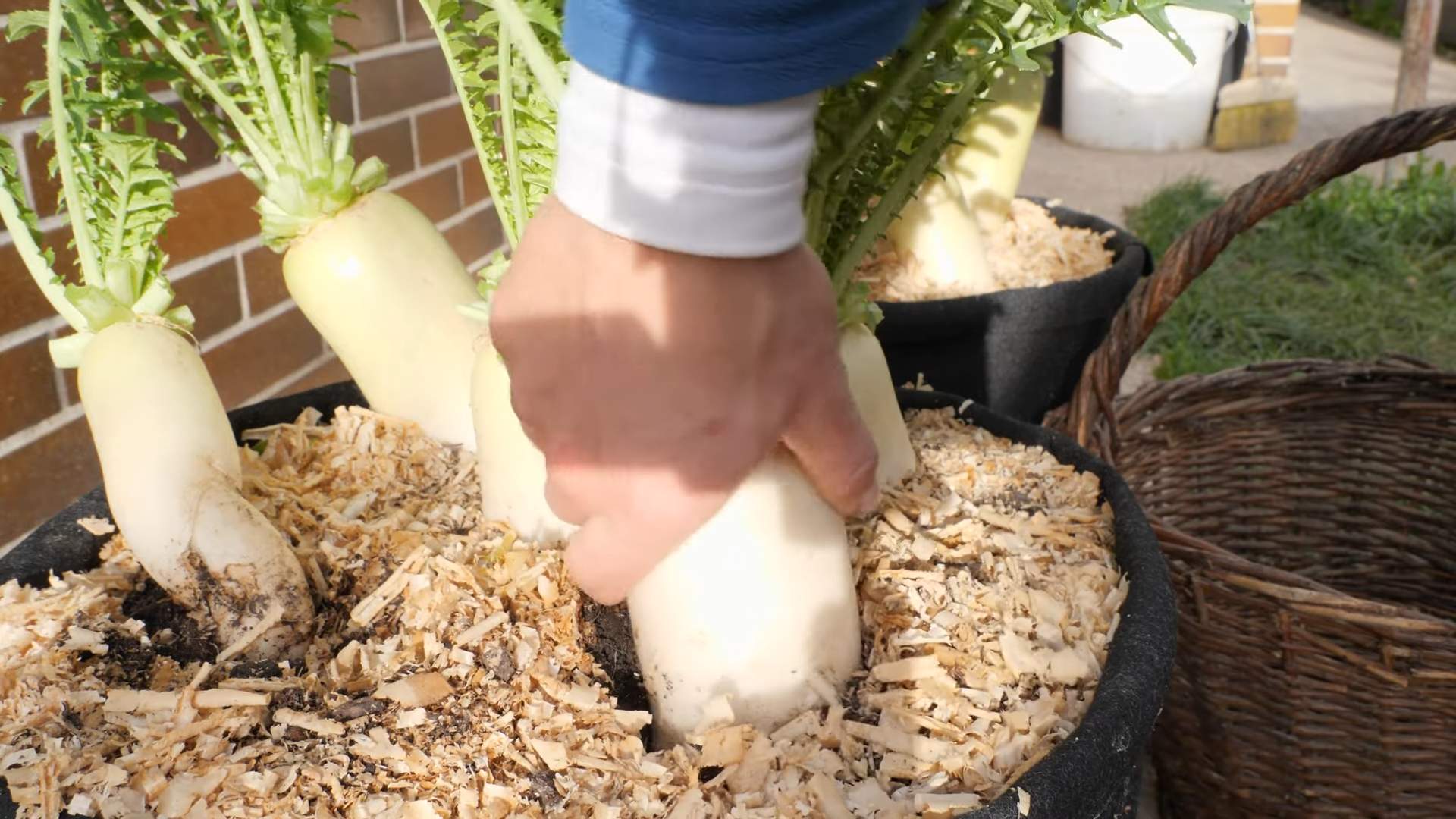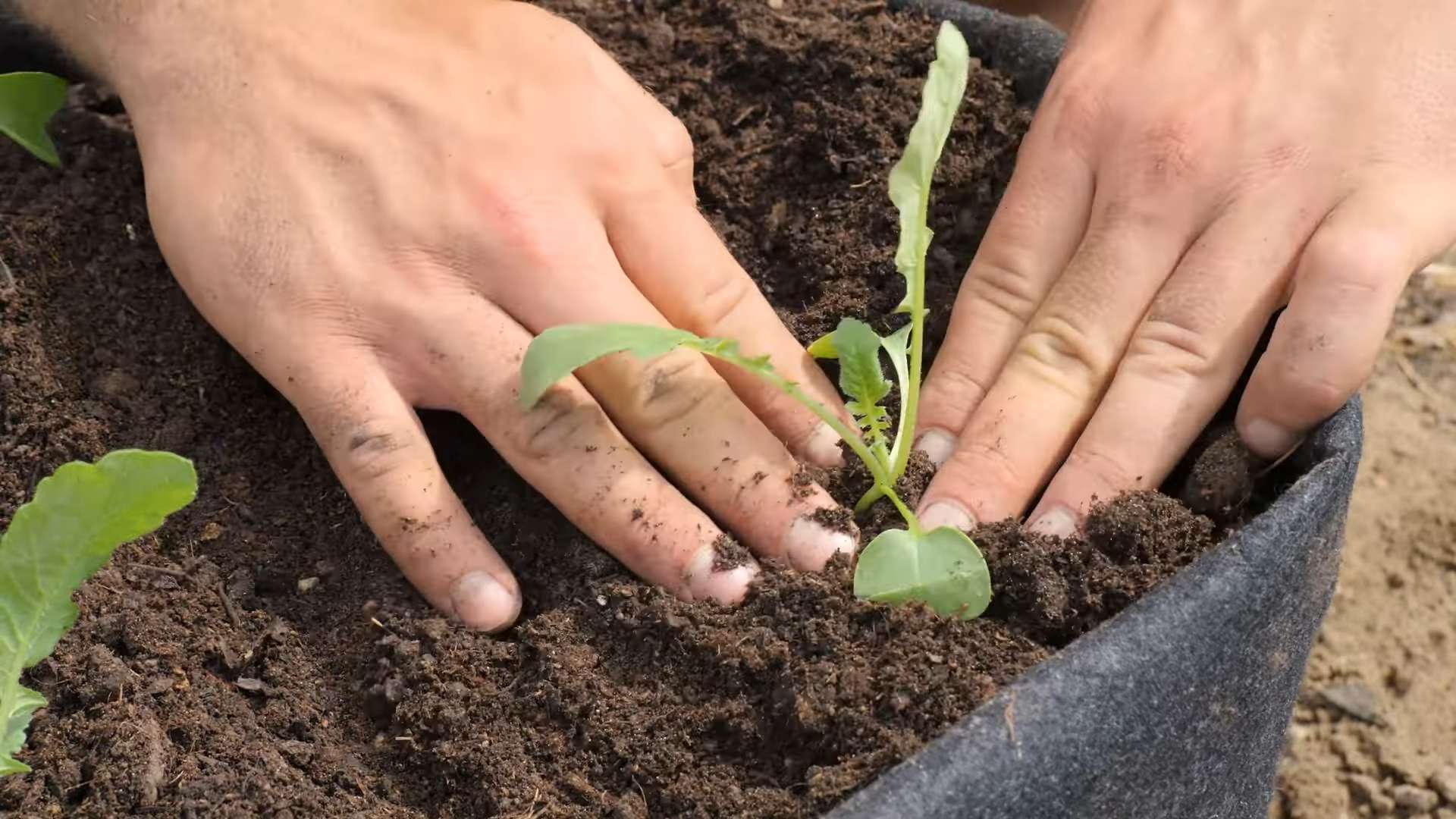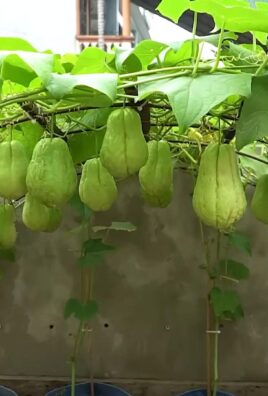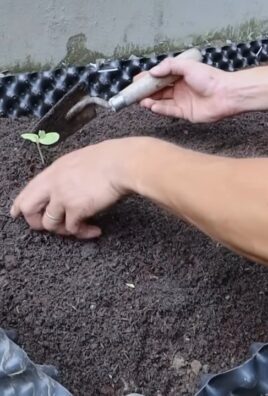Grow radishes indoors? Absolutely! Forget waiting for the perfect spring weather or battling garden pests. I’m here to tell you that you can enjoy the peppery crunch of homegrown radishes all year round, right from the comfort of your own home. For centuries, people have cultivated gardens indoors, from the elaborate orangeries of European royalty to the humble windowsill herb gardens of everyday folks. This tradition speaks to our innate connection with nature and our desire to nurture life, even within the confines of our dwellings.
But why bother growing radishes indoors? Well, think about it: fresh, organic radishes are just steps away whenever you need them. No more last-minute trips to the grocery store or settling for wilted, flavorless produce. Plus, it’s incredibly rewarding to watch those tiny seeds sprout and transform into vibrant, edible roots. This DIY project is perfect for apartment dwellers, beginner gardeners, or anyone looking to add a touch of green to their living space. I’ll guide you through the simple steps and share my favorite tips and tricks to ensure your indoor radish garden thrives. Get ready to grow radishes indoors and enjoy a continuous harvest of these zesty little gems!

Grow Your Own Radishes Indoors: A Beginner’s Guide
Hey there, fellow gardening enthusiasts! Ever craved the peppery crunch of a fresh radish in the middle of winter? Well, guess what? You don’t need a sprawling outdoor garden to enjoy these little root veggies. I’m going to walk you through the surprisingly simple process of growing radishes indoors. Trust me, it’s easier than you think, and the reward of homegrown radishes is totally worth it!
What You’ll Need
Before we dive in, let’s gather our supplies. Here’s a checklist of everything you’ll need to get started:
* Radish Seeds: Choose a variety that matures quickly. ‘Cherry Belle’ and ‘French Breakfast’ are excellent choices for indoor growing.
* Containers: You’ll need containers that are at least 6 inches deep. I prefer using plastic pots or even repurposed containers like yogurt tubs (just make sure they have drainage holes!).
* Potting Mix: Use a well-draining potting mix. Avoid using garden soil, as it can compact and hinder root growth.
* Grow Lights (Optional but Recommended): Radishes need plenty of light. If you don’t have a sunny windowsill, grow lights will be your best friend.
* Watering Can or Spray Bottle: For gentle watering.
* Fertilizer (Optional): A balanced liquid fertilizer can give your radishes a boost.
* Small Trowel or Spoon: For planting seeds.
Choosing the Right Radish Variety
Not all radishes are created equal, especially when it comes to indoor growing. You’ll want to select varieties that are known for their quick maturation and smaller size. Here are a few of my favorites:
* Cherry Belle: These are classic, round, bright red radishes that mature in about 22 days. They’re reliable and easy to grow.
* French Breakfast: These are elongated, red radishes with a white tip. They have a milder flavor and mature in around 25 days.
* Easter Egg: This is a mix of different colored radishes (red, pink, purple, white) that mature in about 28 days. It’s a fun option if you want a bit of variety.
* Sparkler White Tip: Similar to French Breakfast, but rounder. Matures in about 24 days.
Preparing Your Containers
Okay, let’s get our hands dirty! Preparing your containers properly is crucial for successful radish growing.
1. Choose Your Containers: Select containers that are at least 6 inches deep and have drainage holes. Radishes need room to grow their roots, and good drainage is essential to prevent root rot.
2. Clean Your Containers: If you’re using repurposed containers, make sure to clean them thoroughly with soap and water to remove any dirt or debris.
3. Add Potting Mix: Fill your containers with a well-draining potting mix, leaving about an inch of space at the top. Gently pat down the soil to remove any air pockets.
4. Water the Soil: Moisten the potting mix thoroughly before planting your seeds. This will help the seeds germinate.
Planting Your Radish Seeds
Now for the fun part – planting the seeds!
1. Sow the Seeds: Sprinkle the radish seeds evenly over the surface of the soil, spacing them about an inch apart.
2. Cover the Seeds: Cover the seeds with a thin layer (about 1/4 inch) of potting mix.
3. Water Gently: Water the soil gently using a watering can or spray bottle. Be careful not to dislodge the seeds.
4. Label Your Containers: It’s always a good idea to label your containers with the date and the variety of radish you planted.
Providing the Right Environment
Radishes need the right environment to thrive indoors. Here’s what you need to keep in mind:
1. Light: Radishes need at least 6 hours of sunlight per day. If you don’t have a sunny windowsill, use grow lights. Place the grow lights a few inches above the plants and keep them on for 12-14 hours a day.
2. Temperature: Radishes prefer cool temperatures, ideally between 50°F and 65°F (10°C and 18°C). Avoid placing them near heat sources.
3. Watering: Keep the soil consistently moist, but not soggy. Water when the top inch of soil feels dry to the touch. Overwatering can lead to root rot.
4. Air Circulation: Good air circulation helps prevent fungal diseases. You can use a small fan to circulate the air around your plants.
Caring for Your Radishes
Once your radishes have sprouted, it’s important to provide them with the right care to ensure a bountiful harvest.
1. Thinning: Once the seedlings have emerged and have a couple of true leaves, thin them out so that they are about 2 inches apart. This will give them enough space to grow. Snip the unwanted seedlings at the soil line with scissors rather than pulling them out, to avoid disturbing the roots of the remaining plants.
2. Fertilizing (Optional): If you want to give your radishes a boost, you can fertilize them with a balanced liquid fertilizer every two weeks. Follow the instructions on the fertilizer label.
3. Weeding: Keep your containers free of weeds. Weeds can compete with your radishes for nutrients and water.
4. Monitor for Pests and Diseases: Keep an eye out for pests and diseases. Aphids and flea beetles are common pests that can attack radishes. If you notice any pests, you can try spraying them with insecticidal soap. Root rot is a common disease that can affect radishes. To prevent root rot, make sure your soil is well-draining and avoid overwatering.
Harvesting Your Radishes
The moment we’ve all been waiting for – harvesting! Radishes are quick growers, so you won’t have to wait long.
1. Check for Maturity: Radishes are typically ready to harvest in 20-30 days, depending on the variety. Check the seed packet for specific maturity dates.
2. Harvest When Ready: Harvest your radishes when they reach the desired size. Gently pull them out of the soil. If the soil is dry, water it before harvesting to make it easier to pull the radishes out.
3. Enjoy Your Harvest: Wash your radishes and enjoy them fresh. They’re delicious in salads, sandwiches, or as a crunchy snack.
Troubleshooting Common Problems
Even with the best care, you might encounter a few problems along the way. Here are some common issues and how to fix them:
* Leggy Seedlings: If your seedlings are tall and spindly, they’re not getting enough light. Move them to a sunnier location or use grow lights.
* Slow Growth: Slow growth can be caused by a lack of nutrients or water. Make sure you’re watering your radishes regularly and fertilizing them if needed.
* Cracked Radishes: Cracked radishes are usually caused by inconsistent watering. Make sure you’re watering your radishes regularly and evenly.
* Bitter Radishes: Bitter radishes can be caused by hot weather or a lack of water. Keep your radishes cool and well-watered.
* Root Rot: Root rot is caused by overwatering. Make sure your soil is well-draining and avoid overwatering.
Tips for Success
Here are a few extra tips to help you succeed with indoor radish growing:
* Succession Planting: Plant a new batch of radish seeds every week or two to ensure a continuous harvest.
* Rotate Your Crops: Avoid planting radishes in the same container year after year. This can help prevent soilborne diseases.
* Use Companion Planting: Plant radishes with other vegetables, such as carrots or lettuce. Companion planting can help improve growth and deter pests.
* Don’t Overcrowd: Give your radishes enough space to grow. Overcrowding can lead to stunted growth and disease.
* Have Fun!: Gardening should be enjoyable. Don’t be afraid to experiment and try new things.
Growing radishes indoors is a rewarding experience that anyone can enjoy. With a little bit of care and attention, you can have a fresh supply of these peppery veggies all year round. So, grab your seeds, get your hands dirty, and start growing! Happy gardening!

Conclusion
So, there you have it! Growing radishes indoors is not only achievable, but it’s also a surprisingly rewarding experience. Forget those bland, store-bought radishes that lack that peppery punch. With a little effort and this simple DIY trick, you can cultivate a continuous supply of crisp, flavorful radishes right in your own home, regardless of the season.
Why is this a must-try? Because it puts you in control. You control the soil, the light, and the watering, ensuring that your radishes are grown without harmful pesticides or herbicides. You get to enjoy the satisfaction of nurturing something from seed to harvest, and you get to savor the unparalleled taste of freshly grown produce. Plus, it’s a fantastic way to add a touch of green to your indoor space, especially during those long winter months.
But the fun doesn’t stop there! Feel free to experiment with different radish varieties. ‘Cherry Belle’ is a classic choice for its quick growth and mild flavor, but why not try ‘French Breakfast’ for its elongated shape and slightly sweeter taste, or ‘Black Spanish’ for a more intense, pungent flavor? You can also play around with different soil mixes to see what works best for your growing environment. Consider adding a bit of compost or worm castings to boost nutrient levels.
Another variation to consider is succession planting. Sow a small batch of seeds every week or two to ensure a continuous harvest throughout the growing season. This way, you’ll always have fresh radishes on hand for salads, snacks, or garnishes.
Don’t be afraid to get creative with your radish greens too! They’re often overlooked, but they’re packed with nutrients and have a delicious peppery flavor. Add them to salads, stir-fries, or even pesto for a healthy and flavorful boost.
Ultimately, the best way to discover the joys of growing radishes indoors is to simply give it a try. It’s a relatively low-cost and low-maintenance project that can yield surprisingly delicious results. We’re confident that once you taste the difference between homegrown and store-bought radishes, you’ll be hooked!
We encourage you to embark on this gardening adventure and share your experiences with us. What varieties did you try? What challenges did you encounter? What tips and tricks did you discover along the way? Share your photos, stories, and insights in the comments below. Let’s build a community of indoor radish growers and learn from each other! Happy growing!
Frequently Asked Questions (FAQ)
What is the best time of year to grow radishes indoors?
The beauty of growing radishes indoors is that you can do it year-round! Unlike outdoor gardening, you’re not limited by seasonal weather conditions. As long as you provide adequate light, temperature, and moisture, you can enjoy a continuous harvest of fresh radishes any time of the year. This makes it a perfect project for those who live in colder climates or simply want to extend their growing season.
How much light do radishes need when grown indoors?
Radishes need at least 6 hours of direct sunlight per day to thrive. If you don’t have a sunny windowsill, you can supplement with grow lights. Fluorescent or LED grow lights are excellent options. Place the lights a few inches above the seedlings and adjust as they grow. Insufficient light can result in leggy plants and small, underdeveloped radishes. Remember, adequate light is crucial for healthy growth and flavorful radishes.
What type of container should I use for growing radishes indoors?
Choose a container that is at least 6 inches deep to allow the radishes to develop properly. The container should also have drainage holes to prevent waterlogging, which can lead to root rot. You can use plastic pots, terracotta pots, or even repurposed containers like yogurt tubs or milk cartons. Just make sure they are clean and have adequate drainage. The size of the container will depend on how many radishes you want to grow. A good rule of thumb is to allow about 1-2 inches of space between each radish seed.
What kind of soil is best for growing radishes indoors?
Radishes prefer well-draining, loose soil that is rich in organic matter. A good potting mix will work well. You can also create your own mix by combining equal parts of potting soil, compost, and perlite or vermiculite. The compost will provide nutrients, while the perlite or vermiculite will improve drainage and aeration. Avoid using heavy clay soil, as it can compact and hinder root development.
How often should I water my indoor radishes?
Keep the soil consistently moist, but not waterlogged. Water when the top inch of soil feels dry to the touch. Avoid overwatering, as this can lead to root rot. Also, avoid letting the soil dry out completely, as this can stress the plants and affect their growth. A good way to check the moisture level is to stick your finger into the soil. If it feels dry, it’s time to water.
How long does it take for radishes to mature when grown indoors?
Radishes are one of the fastest-growing vegetables, making them ideal for indoor gardening. Most varieties mature in just 3-4 weeks. Check the seed packet for specific information on the variety you are growing. You’ll know they’re ready to harvest when the radish roots are about 1 inch in diameter. Don’t let them get too large, as they can become woody and bitter.
Are there any common pests or diseases that affect indoor radishes?
While indoor radishes are generally less susceptible to pests and diseases than outdoor radishes, they can still be affected by certain problems. Common pests include aphids, flea beetles, and whiteflies. You can control these pests by handpicking them off the plants, spraying them with insecticidal soap, or using sticky traps. Diseases like damping-off and root rot can be prevented by using well-draining soil and avoiding overwatering.
Can I grow radishes indoors from scraps?
Unfortunately, you cannot regrow radishes from scraps like you can with some other vegetables. Radishes grow from seeds, and the edible part is the root. Once you harvest the radish, the root is gone, and there’s nothing left to regrow. However, you can save the seeds from your radishes to plant future crops.
How do I harvest radishes grown indoors?
Harvest radishes when they reach the desired size, usually about 1 inch in diameter. Gently pull them from the soil, being careful not to damage the roots. If the soil is dry, you may need to loosen it first. Wash the radishes thoroughly and trim off the tops and roots. Store them in the refrigerator in a plastic bag or container for up to a week.
What can I do with radish greens?
Don’t throw away those radish greens! They’re packed with nutrients and have a delicious peppery flavor. You can add them to salads, stir-fries, soups, or even pesto. They can also be sautéed with garlic and olive oil for a simple and healthy side dish. Just be sure to wash them thoroughly before using them.




Leave a Comment